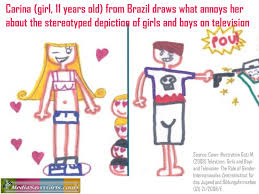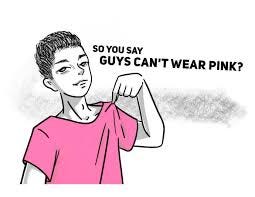Children have the power to reduce gender gap
How education can play a role in breaking gender stereotypes.
According to the World Economic Forum- In 2020, the Global Gender Gap score stands at 68.6%. Which means none of us will see gender parity in our lifetimes, and nor likely will many of our children. This also reveals that gender parity will not be attained for 99.5 years.

99.5 years! There must be some way to reduce this.
Yes, there is. The answer to which is educating children about gender equality and ways to overcome gender stereotypes.
At what age can this be introduced?
Children begin to form concepts of gender beginning around age 2, and most children know whether they are a boy or a girl by age 3. Around age 3-5 they start understanding what it means to be male or female. Post which they start understanding stereotypes and attempt to understand their identity as well. So you can start at any point!
How can we teach children to identify and respond to gender stereotypes?
Let's start with identify.
1.Activity- A simple activity to help children understand is to give a child different verbs like dancing, boxing, playing cricket, etc. Ask them to separate it into two columns girls and boys. They are most likely to put dancing for girls and boxing for boys. Proceed by showing them pictures of people from all genders with different professions. Repeat the first activity again. This will help break stereotypes in their head. You can find the resources here.
2. Videos- Videos are a great way to help children identify and understand gender stereotypes. Here is a video you can show. Remember to pause the video and ask questions in between.

3. Storytelling- Life skills and English can be taught together. Here are some brilliant books on understanding gender discrimination. Here are my worksheets on the book No differences between us.

4. Observe and discuss -Have discussions to explore different gender roles. For example, you could start by saying, “I understand that seeing Priyank playing house and wearing a pink shirt in the kitchen makes you feel uncomfortable. Can you tell me a little more about that?”
Becoming aware of gender stereotypes is not enough. A child must be able to respond to it as well. Here is how they can do that:
1. Understand where people come from- Remember some people practice stereotypes unconsciously as mentioned in the previous article. Being angry is not the answer to making them aware. A child can ask simple questions to help the other person reflect on their actions.

2. Communicating in the right away- Use the following steps to help them respond in a respectful manner.
Tell them they can do it
Discuss the importance of tone and temperament
Consider their safety
Be patient and believe they can make a difference
Keep their eyes on the behavior
Avoid labeling people.
One of the ways to do that is by simply asking Why. In the case of boys being asked not to a cry. A child can simply ask Why? If the answer is because he is a boy. A child can ask don’t boys have feelings too?
3. Activity- Remember ‘snakes and ladders’? Well, imagine this as a gender game. Children are given statements related to gender: either positive messages, such as 'everyone has a right to education', 'it is up to us to treat everyone equally', and 'everyone can do household chores'; or negative messages like 'it is more important for boys to go to school', 'male students are lazier', and 'girls and boys cannot play the same games together'.
The children either move forwards up the ladders or backward down the snakes – depending on whether they agree or disagree with each statement. The aim is to replace negative messages with positive ones, so children who find themselves at the top of a snake have the chance to change the negative message into a positive one. If they do, they get to roll the dice for another turn.

Remember, children hold the key to the future. Educating them from the start can be a massive step towards gender equality.




Very informative and I recommend every parent to read this blog👌🏼👌🏼